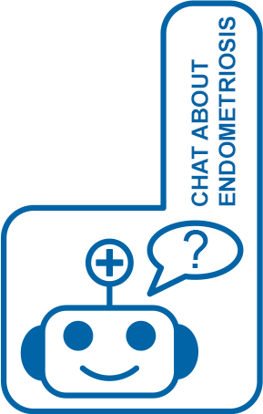Chatbots
Most people have probably experienced a symptom and subsequently searched for answers on the internet. The results are often confusing or contradicting, which may lead to unnessecary fear and misinformation before contacting a doctor. This underlines the importance of reliable and easily accessible answers which may be provided by a healthcare chatbot.
Project period
Start: 1 June 2022
End: 31 May 2023
Chatbots have become increasingly common, especially in the private sector where the advancements of the AI-driven technology means that chatbots can understand complex sentences as well as integrate with other systems. In order for chatbots to work properly in the healthcare sector, they must be able to give clinically valid answers.
The chatbot must be able to answer the patient group’s most frequent questions, and if in doubt, forward the enquiry to a healthcare professional or refer the patient to other contact options.
Aim
This project examined the potential of AI-based chatbots in the healthcare sector, starting with patients with endometriosis who were in contact with the Department of Gynaecology and Obstetrics at Odense University Hospital (OUH).
 The project ran in three phases:
The project ran in three phases:
- Uncover the wishes from patients and healthcare professionals for the chatbot and what they needed in order to trust the technology.
- Develop and test the chatbot in co-operation with patients and healthcare professionals.
- Collection of the patients’ experiences within parameters such as user friendliness, relevancy of the answers, language, trust and if the chatbot could help patients avoid misinformation regarding their disease.
If successful, the solution would provide the patients with immediate answers and reduce the load on the staff, who often answered many identical questions on the phone or via the chat in the My Hospital app.
As AI technology develops rapidly, new uses may arise for the chatbots in the future. The experiences from this project will be useful for developing more AI-based chatbot systems in the healthcare sector and serve as a stepping stone for implementation in other departments or with other patient groups.
Results
Patients and staff at the Department of Gynaecology and Obstetrics were interviewed in the autumn of 2022 in order to map what wishes, needs and attitudes they had towards chatbots in the healthcare system, and specifically in relation to endometriosis, before the chatbot was developed. After the development and testing of the chatbot, patients and staff were interviewed again at the beginning of 2023.
- Interviews showed where there was value in having the chatbot available and capable of answering without delay, and that the chatbot was perceived as a stable and user-friendly solution.
- The chatbot showed itself to be suitable for patients who are newly diagnosed and/or new patients in the department, as it can answer general and practical questions. The chatbot can prepare the new patient well before the first meeting in the department. The chatbot is seemingly able to support a good search for knowledge by gathering information in one place, and having quality assurance by clinicians who work within the specialty.
- Patients who are known in the department and have had the diagnosis for a while (+1 year) indicate that they do not benefit much from the chatbot in its current form, as it cannot answer personal disease-specific and treatment-related questions. Both staff and patients see great potential in the chatbot being further developed so it could be able to answer treatment-related and disease-specific questions.
The chatbot is currently implemented in the department and is available to patients around the clock.
Participants
- The Department of Gynaecology and Obstetrics at OUH
- Centre for Innovative Medical Technology (CIMT)
- Centre for Clinical AI (CAI-X)
- Regional IT at the Region of Southern Denmark
- The IT Department at the Region of Southern Denmark led the technological development of the bot with assistance from the company SupWiz, which specialises in chatbots.
Funding
The project was funded by the OUH Innovation Fund.
The innovation project was also anchored at the Centre for Innovative Medical Techonology (CIMT).

Peter Børker Nielsen
Programme Manager
Centre for Clinical Artificial Intelligence (CAI-X). Odense University Hospital, Dept. of Clinical Development - Innovation, Research & HTA
(+45) 2460 7692 peter.borker.nielsen@rsyd.dk
